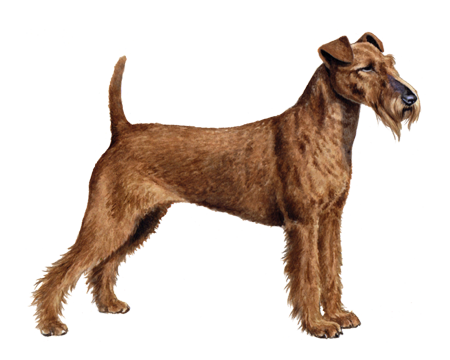
Russian Toy
Lively and merry, the Russian Toy breed has a sharp intelligence and seeks to please. Russian Toys are superb dogs for folks of all stripes. They love to cuddle and be near their human companions.
Interested in discovering if your dog is a Russian Toy?
Check out Wisdom Panel's DNA tests.

Russian Toy Traits
General Appearance
Long legs and a lean yet muscular build complement the elegant look of the petite Russian Toy.
Coat and Colouring
The Russian Toy's coat can be short (smooth, close-lying, and shiny) or long (soft, and wavy to curly). It may be black and tan, chocolate and tan, blue and tan, red, red sable, or red-brown. Small white markings and brindle are also possible, but the latter is disqualified by the breed standard.
Distinctive Physical Traits
With a tiny head, large eyes, and triangular ears, the Russian Toy is one of the smallest breeds in the world.
Russian Toy Temperament
Intelligent, affectionate, and outgoing, the Russian Toy is a people-oriented breed that forms close family bonds. These easy-going dogs interact well with both children and elderly people. (Of course, all dogs should be supervised around kids to ensure safety.)
The breed thrives on human companionship and doesn't do well if left alone, as it often suffers from separation anxiety. In general, the Russian Toy is a cheerful little rascal that loves to scamper about the yard and play. But at the same time, they're also happy to lounge around the house all day.


Russian Toy History
This breed originated as a companion dog for the Russian nobility in 18th-century Russia. At that time, it was fashionable to import English Toy Terriers. Loved for their small size and energetic personality, these dogs often went to social events alongside the upper class. At the start of the 20th century, the breed became known as the Russian (Russkiy) Toy Terrier.
Breeding stopped during the Russian Revolution in 1917, nearly driving these dogs to extinction. After Stalin's death, several regions of the Soviet Union worked to bring the Russian Toy Terriers back. But the resulting breed was very different from the English Toy Terrier, and it came in both short- and long-coat varieties.
"Terrier" was removed from the breed's name in 2006 when the Russian Toy joined the Fédération Cynologique Internationale list of recognized breeds.
Russian Toy Care
Nutrition
The Russian Toy requires a high-quality, age-appropriate (e.g., puppy, adult, senior) diet. You should monitor how much your Russian Toy eats, and reduce portions if they gain excess weight. Also, remember that giving too many treats can contribute to obesity.
Grooming
When it comes to grooming, this breed is relatively low-maintenance. To keep your longhaired Russian Toy looking their best, brush a couple of times per week, and give baths monthly. For the smooth-coated Russian Toy, a weekly brushing and the occasional bath are sufficient.
Exercise
The Russian Toy is a happy, moderately energetic, playful dog that benefits from several walks each day. But this breed's neck and trachea are fragile. So, be sure to use a harness rather than a collar on walks.
Russian Toys also excel in obedience, agility, rally, and tracking. If they don't get enough exercise, they may bark excessively or turn to destructive behavior to satisfy pent-up energy.
Training
This toy breed requires consistent obedience training to prevent small dog syndrome (when little dogs become overly dominant). Otherwise, your Russian Toy might constantly bark, nip at strangers, or challenge your authority.
Early socialization can help teach your Russian Toy good manners and ensure they interact with other dogs safely.

Breed Group
Terrier
The Terrier Group ancestors were bred to hunt and kill vermin. They are often characterized as feisty and energetic dogs whose sizes range from fairly small to much larger.
Resources
https://www.google.com/books/edition/Dogs/Xac4CQAAQBAJ
https://www.akc.org/dog-breeds/russian-toy/
Reviewed 26 July 2020 by Annette Louviere, DVM































































